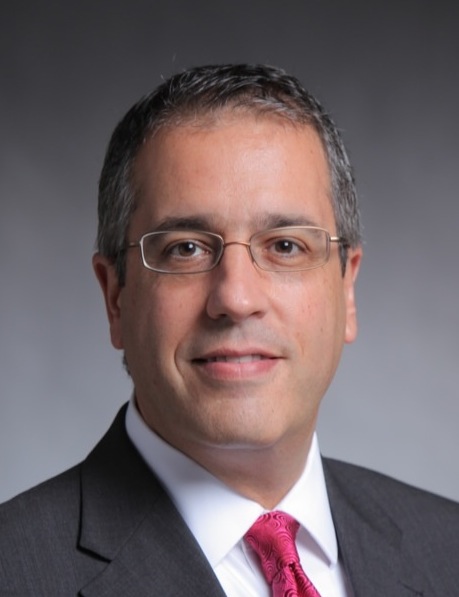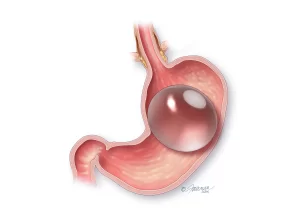American Obesity Center ®
Nonsurgical Weight Loss
Looking for a safe and effective way to achieve weight loss without surgery? Look no further. At the American Obesity Center, we offer unique and innovative nonsurgical treatments for weight loss. Dr. Anthony Starpoli, a renowned specialist in gastroenterology and obesity medicine, uses state-of-the-art incision-less endoscopic procedures to help patients achieve their weight loss goals. Our comprehensive programs combine medications with dietary and lifestyle changes, providing you with a holistic approach to long-term weight management. Say goodbye to traditional bariatric surgery and its potential side effects. Trust Dr. Starpoli to provide you with safe and effective alternatives. Contact us today to learn more about our services and schedule a consultation. Nonsurgical therapy for weight loss starts here.
Endoscopic bariatric procedures, known as EBPs, present a minimally invasive alternative to traditional weight loss surgery. By utilizing the endoscope and the Apollo Overstitch device, which operates similarly to a sewing machine, this technique has proven highly effective in helping patients achieve significant weight loss. The advantage of EBPs lies in their outpatient nature, eliminating the need for hospitalization. Furthermore, the Apollo Overstitch device offers an added benefit as it can also be used to revise a failed gastric bypass surgery. This approach, less invasive than traditional surgical sleeve gastrectomy surgery, has shown remarkable results in helping individuals overcome weight-related challenges. Visit the American Obesity Center for more information and explore how EBPs can be a life-changing solution.

Our philosophy
Ninety-nine percent of persons suffering from the worldwide obesity epidemic remain untreated. We can fight back with new technologies and techniques. As an illustration, there are now simpler and safer interventions that can be performed to induce significant and sustainable weight loss. Paramount to these novel treatments is a sound nutritional and behavioral program with a personal approach.
Dr. Anthony Starpoli
Endoscopic Sleeve Gastroplasty (ESG)
Reducing the stomach size without cutting.
Endoscopic Sleeve Gastroplasty known as ESG is a proven method for treating obesity that is comparable to traditional gastric sleeve surgery. It is an alternative to surgical sleeve gastrectomy, which involves partial removal of the stomach. ESG endoscopic sleeve gastroplasty is a cutting-edge technique that enables weight loss while preserving the stomach. This procedure employs a type of sewing machine that is inserted through the mouth, without any cutting required. By reducing the length and width of the gastric cavity, ESG significantly reduces the functional volume of the stomach, thereby restricting the amount of food a patient can eat. This mechanism is critical in achieving substantial and long-term weight loss.
The benefits of this non-surgical procedure are numerous. Patients do not experience the side effects associated with more invasive surgery, and the procedure can be performed in an outpatient setting, allowing most patients to return home on the same day. While the expected weight loss may be slightly less than traditional surgery, it still amounts to an impressive 15-20% total body weight loss. To ensure success, we recommend dietary and behavioral counseling throughout the entire process. Choose ESG, and take control of your weight loss journey today!
ESG is a highly effective weight loss option with significantly lower side effects than traditional surgery. It is suitable for patients who are not eligible for formal surgery or prefer a less invasive approach. Those who opt for weight loss procedures have likely not achieved success with dietary and lifestyle modifications alone.
Endoscopic Sleeve Gastroplasty
Gastric Bypass Revision
GLP-1 Pharmacotherapy
Weight loss Balloons
Anthony A. Starpoli, MD
As a leading New York Gastroenterologist, Dr. Anthony Starpoli manages the spectrum of gastrointestinal disorders. He is triple board-certified in Internal Medicine, Gastroenterology and Obesity Medicine.
Dr. Starpoli is affiliated with Lenox Hill Hospital-Northwell Health, Mt. Sinai – Beth Israel Medical Center, and NYU Langone Medical Center. Dr. Starpoli focuses on the incisionless, endoscopic treatment of reflux disease (GERD) and obesity.
Dr. Starpoli places stomach balloons for weight loss and performs endoscopic suturing for revising gastric bypass surgery and for stomach size reduction known as sleeve gastroplasty. As past President of the New York Society for Gastrointestinal Endoscopy (NYSGE), he participates in various educational and research activities. Aided by his extensive experience, Dr. Starpoli and his caring staff are dedicated to delivering quality patient care.
Dr. Starpoli may be the right physician for you or your loved ones. We welcome patients from all over the United States, Canada and beyond!
I’d Love to Help
Learn about ESG…
Our Approaches to Weight Loss
Looking for a unique and innovative approach to weight loss? At the American Obesity Center, we offer safe and effective nonsurgical treatments that can help you achieve your goals. Dr. Anthony Starpoli, a highly qualified medical professional with triple board certification in internal medicine, gastroenterology, and obesity medicine, specializes in incisionless procedures that achieve weight loss without the need for surgery. Using cutting-edge techniques like endoscopic suturing and the Apollo Overstitch device, we can help you reduce your stomach size and achieve significant weight loss. Our procedures are minimally invasive, allowing for outpatient treatment and eliminating the need for a hospital stay. Say goodbye to traditional bariatric surgery and its potential side effects. Trust Dr. Starpoli and the team at the American Obesity Center to provide you with safe and effective alternatives. Contact us today to learn more about our services and schedule a consultation. Nonsurgical therapy for weight loss starts here.
Gastric Bypass Failure: what you can do about it.
The Roux-en-Y gastric bypass (RNYGB) is a popular and effective procedure for treating obesity. This combination of a restrictive and malabsorptive procedure involves reducing the size of the stomach and bypassing a section of the small intestine to decrease calorie absorption. If patients experience weight regain after the surgery, Dr. Starpoli examines their stomachs through a simple upper endoscopic camera inspection, specifically looking for a dilated or widened bypassed connection. Studies have shown that RNYGB can lead to significant weight loss, with 67% of excess weight lost at 1-2 years post-op, 60% at 5 years post-op, and more than 50% at years 5 through 10 post-op.
However, about 20-35% of patients may experience weight regain despite the procedure’s overall success. The endoscopic approach to gastric bypass revision aims to reduce the size of the stomach pouch and the diameter of the gastro-jejunal anastomosis without needing open or laparoscopic surgery.
sGLP-1 Receptor Agonists: the latest injectable weight loss drugs.
GLP-1 agonists, or glucagon-like peptide-1 agonists, are a class of medications used in treating type 2 diabetes and, more recently, for weight management. These medications mimic the actions of a naturally occurring hormone called glucagon-like peptide-1 (GLP-1). GLP-1 is produced in the intestines in response to food intake.
GLP-1 Mechanisms of Action:
-GLP-1 is an incretin hormone that plays a role in regulating blood sugar levels. It stimulates insulin release from the pancreas in response to elevated blood glucose levels.
-Suppresses glucagon release, which helps lower blood sugar levels by reducing glucose production in the liver.
-Slows gastric emptying, leading to a feeling of fullness and potentially contributing to weight loss.
The GLP-1 agonists like Wegovy, Saxenda, and Zepbound are all the rage as a “surefire” weight loss solution. Remember that these drugs are used for life and are not without risks. Additionally, the data shows that when stopped, weight is regained.
Other key points about these weight loss medications.
Gastrointestinal Issues:
Common side effects include nausea, vomiting, diarrhea, and abdominal pain. These symptoms may diminish over time, but they can affect individuals differently.
Pancreatitis:
There have been reports of pancreatitis (inflammation of the pancreas) associated with the use of GLP-1 agonists. Patients should be monitored for signs and symptoms of pancreatitis, such as severe abdominal pain.
Thyroid C-Cell Tumors:
Studies in rodents have shown an increased risk of thyroid C-cell tumors with certain GLP-1 agonists. The relevance of these findings to humans is not fully understood, and further research is needed.
Hypoglycemia:
GLP-1 agonists like Wegovy may enhance the glucose-lowering effects of insulin and other anti-diabetic medications, potentially leading to hypoglycemia (low blood sugar). This risk is particularly relevant in individuals with diabetes.
Cardiovascular Events:
Some studies have investigated the cardiovascular safety of GLP-1 agonists. While some have suggested cardiovascular benefits, it’s essential to consider individual cardiovascular risk factors.
Kidney Function:
Changes in kidney function, including acute renal failure, have been reported with the use of GLP-1 agonists. Regular monitoring of kidney function is recommended.
Injection Site Reactions:
Like other injectable medications, GLP-1 agonists may cause injection site reactions, such as redness or swelling.
Weight Regain:
There is a possibility of weight regain after discontinuation of the medication. Lifestyle and dietary changes are crucial for maintaining weight loss.
 Stomach Balloons for Weight Loss
Stomach Balloons for Weight Loss
The Orbera intragastric balloon is a nonsurgical procedure effective in temporarily reducing hunger by controlling food intake and is completely reversible. A single, soft, expandable, silicone balloon is placed inside the stomach through the mouth using a video upper endoscope. Once inserted into the stomach, the empty balloon is filled with sterile saline water that results in the inflated balloon occupying a large part of the stomach. The balloon creates a feeling of fullness causing one to feel full much earlier during meals.
Placement of the intragastric balloon takes approximately 30 minutes and is performed by a team of qualified gastroenterologists who are experienced in flexible endoscopy. The balloon is inserted and removed in the outpatient, same-day setting and does not involve surgery. Dr. Starpoli performs a truly minimally invasive procedure.
The intragastric balloon procedure is completely reversible and effective in temporarily reducing hunger by controlling food intake. In combination with behavioral change and structured nutritional guidance, a 19% to 50% loss of excess weight can be achieved

 Stomach Balloons for Weight Loss
Stomach Balloons for Weight Loss